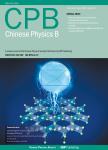Synthesis and performance of Zn–Ni–P thin films
Synthesis and performance of Zn–Ni–P thin films作者机构:New Materials and Technologies LaboratoryNational Research and Development Institute for Nonferrous and Rare Metals-IMNR Institute of Physical Chemistry "Ilie Murgulescu"Laboratory of Molten Salts University Polytehnica of BucharestCenter of Biomaterials (BIOMAT)
出 版 物:《Chinese Physics B》 (中国物理B(英文版))
年 卷 期:2015年第24卷第3期
页 面:259-268页
核心收录:
学科分类:08[工学] 080501[工学-材料物理与化学] 0805[工学-材料科学与工程(可授工学、理学学位)] 0704[理学-天文学]
基 金:support by the Partnership Romanian Research Program(PNCDI2) CORZIFILM Project nr.72-221/2008-2011 "EU(ERDF) and Romanian Government" that allowed for acquisition of the research infrastructure under POS-CEEO 2.2.1 project INFRANANOCHEM-Nr.19/01.03.2009
主 题:thin film corrosion electrochemistry surface
摘 要:The electroplating of Zn–Ni–P thin film alloys from a sulfate bath containing phosphoric and phosphorous acid was investigated. The bath composition and the deposition parameters were optimized through Hull cell experiments, and the optimum experimental conditions were determined(p H = 2, temperature = 298–313 K, zinc sulfate concentration =30 g·L^-1, EDTA concentration = 15 g·L^-1, and current density = 1.0–2.0 A·dm^-2). The SEM analysis of the coating deposited from the optimum bath revealed fine-grained deposits of the alloy in the presence of EDTA. Optical microscopy analysis indicated an electrodeposited thin film with uniform thickness and good adhesion to the steel substrate. The good adherence of the coatings was also demonstrated by the scratch tests that were performed, with a maximum determined value of 25 N for the critical load. Corrosion resistance tests revealed good protection of the steel substrate by the obtained Zn–Ni–P coatings, with values up to 85.89% for samples with Ni contents higher than 76%. The surface analysis of the thin film samples before and after corrosion was performed by X-ray photoelectron spectroscopy(XPS).



